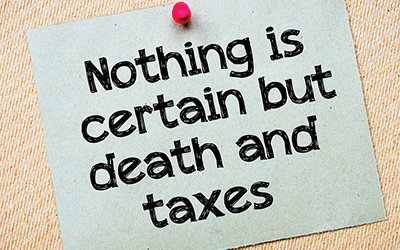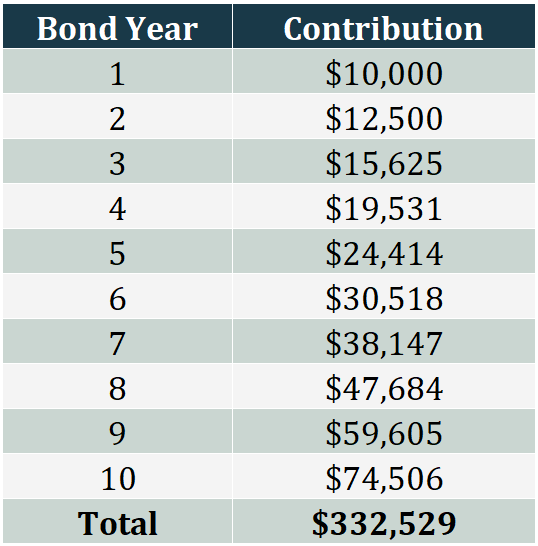Governments around the world have pledged trillions of dollars in support packages in response to the enforced closure of great swathes of their economies, and without that support the economic impact of the COVID19 crisis could be potentially catastrophic. The Australian government alone has pledged more than $200 billion so far with the promise there’ll be more to come if necessary. All this spending raises an obvious question: how on earth are governments going to pay for it?
The conventional narrative is that governments will issue piles and piles of bonds to fund these packages, and they’ll just have to hope there will be sufficient buyers for those bonds, most likely from overseas. And even with very low interest rates the government will have to dedicate higher and higher proportions of the revenue it collects in taxes to pay the interest on those bonds. The inevitable result will be a crushing amount of debt that will burden future generations, and governments will be forced to raise taxes and cut spending programs as they battle to restore a prudent fiscal position.
Believe it or not, that whole narrative is flawed. While it’s true governments always have to be prudent with their resources, the fact is there is technically no limit to how much the Australian government can spend of its own currency and there will always be buyers of any bonds it decides to issue. It is, however, constrained by the resources available in the economy, so while it can never be insolvent (run out of cash) a government can go bankrupt (run out of resources to back its spending). Nor does the interest accumulate to burden future generations.
Right now, anyone who reads, watches or listens to the news will think that is utter madness. After all, it’s been drilled into us for years that it’s basic economics that a government can’t just spend money it doesn’t have – the bills have to be paid somehow and at some point. These concepts are unquestionably challenging, so it may be helpful to approach them with a ‘clean slate’, in other words, holding no pre-conceived ideas.
A government that controls its currency is never financially constrained
If a government has sovereignty over its own currency, that is, it controls how much is issued and when, there is literally nothing stopping it from issuing as much of that currency as it wants. The US government can issue US dollars, the Japanese government can issue Yen and the Australian government can issue Australian dollars.
What about hyperinflation?
Conventional economics recoils at this idea, arguing if a government keeps issuing currency there will reach a point where the currency’s value is undermined, potentially causing hyperinflation, like we saw in the Weimar Republic, or Zimbabwe, or is happening right now in Venezuela. That’s absolutely correct, but the reason that happened in those examples is because the governments couldn’t back all the newly issued currency with real resources in the economy.
Consider an example: if the Australian government offered a construction company a $100 million contract to build some roads, that company would jump at the opportunity, because they know the government’s good for it. But if the government made the same offer to every construction company in the country, they could legitimately query if the government could command that many resources, especially if it was also spending huge amounts on other programs at the same time. In that case, a construction company may hedge its bets by asking for a higher price, and, voila, you have inflation.
A government is not constrained by its tax revenue
Since a government can create money at will, it follows it doesn’t have to work out how much it can spend based on how much tax revenue it raises. In fact, again perhaps counter-intuitively, it’s the government spending that comes first, and tax revenue follows after that.
Think of it like this: the Australian government requires you to pay tax in Australian dollars, it won’t accept anything else, and if you don’t pay your taxes you can go to jail – this is basically how a government legitimises its currency. Now imagine on day one of a brand new economy the government says you owe us $10,000 tax so we can build some schools. If there hasn’t been any money created yet, how can you possibly pay that tax?
Now imagine the government hands down its budget, with $100 billion of spending; things like pensions and benefits, infrastructure, public servants’ salaries, they’re all paid for by money that’s created by the government, effectively out of thin air, with the press of a computer key (you’re far better off not thinking about money being ‘printed’, there’s no great printing press pumping out notes, it’s all done with computerised transfers, much like paying a bill by BPay).
And let’s assume the government budgets to receive $90 billion in tax revenue. Since there’s already $100 billion in circulation, there is now money available for people and companies to pay those taxes.
So why do we pay tax at all?
If government spending isn’t constrained by how much tax revenue it collects, it’s reasonable to ask: why do we pay tax at all? Taxes are used to regulate demand. By taxing the private sector, the government makes sure there are resources left over for it to meet its own requirements, like hiring schoolteachers, or building hospitals, or funding an army.
Rule #1: a government is not the same as a household
It’s intuitively appealing to anyone who’s run a household budget to think a government has to ‘live within its means’, and those means are usually considered the tax revenue it raises. However, a government is nothing like a normal household since there’s not a household on the planet that can create its own money that anybody would be willing to accept.
The popular conception is to talk about government debt as a percentage of GDP (which is, by the way, a thoroughly flawed measure of national income) again because it’s easier for us to think of a government being constrained by some concept of income just like we are. In fact, as we learned before, the government is constrained by the resources of the entire economy, and keep in mind, normally the economy is growing all the time, so it follows the government can increase its spending in line with that growth.
To extend the analogy, if a household wants to borrow money, a bank will work out how much debt it can service from its income, whether that’s from wages or dividends. Imagine though, a household that has $10 million of assets, that grow in value each year, but no income. It’s as if the bank says, ‘we know you’re able to back that money with real resources, so go ahead and spend’.
Where do these ideas come from?
All these ideas are courtesy of Modern Monetary Theory (MMT), which is simply an explanation, based on iron clad rules of accounting, of how money works in a modern economy where the government controls the currency. Given the explosion in the amount of government spending, there’s been a lot written and said about it recently, unfortunately though, much of it is plain wrong.
One of the most common mistakes is the suggestion ‘maybe it’s time to introduce MMT’. That’s like saying ‘how about tomorrow we introduce the law of gravity’; the truth is, it’s always been there.
What’s the evidence?
You don’t have to look far to find example after example of where conventional economics has been dead wrong. For instance, the argument a government that issues too much debt will see its currency debased and its bond yields skyrocket is plainly absurd given Japan has 240% government debt to GDP, equivalent to about US$10 trillion, an amount it will never ‘save up’ to pay back, yet its 10-year bond yield is 0%, inflation struggles to get positive and the currency is still considered a safe haven.
A common response is to argue Japan is somehow an exception because the Bank of Japan buys most of the government’s bonds. In fact, that’s kind of the point of MMT’s insights: a country’s central bank is effectively the government’s bank. Here in Australia the Reserve Bank is buying government bonds to help keep interest rates down. Consider the circularity of that: the government issues bonds that are bought by another branch of government, and if it hangs on to them until maturity it’s paying money to itself!
These explanations of how money actually works in modern economies is so radically different to what we’ve been taught, and to how we have to think of our own circumstances, that it’s no surprise at all that it causes a lot of controversy! Certainly, conventional economists really struggle with it, and so do most politicians. Hopefully they’ll have a better understanding before they go and hike taxes.





